Everything You Need to Know About Our Virtual Accounts Department Service
You may have noticed we recently launched a virtual accounts department service to help you organise your finances and release more time to focus on growing your business. However, we understand that virtual accounts department is an investment of your money. And we also understand that there are other similar products or services out there too. So we created this blog post to help you understand everything you need to know before buying outsourced accounts department service. We want you to make the right choice. So this article is an unbiased look at our service, to make sure it’s right for you.
What is the virtual accounts department?
Virtual accounts department is your dedicated accounts team but without the risks and commitment of employing extra staff.
Why we created the virtual accounts department service?
We realise that most small businesses need more that just basic bookkeeping or VAT filing support. Busy business owners need to have someone experienced to pick up all the accounting tasks they don’t have time for, like chasing up overdue invoices or knowing which suppliers need paying. They need someone to go to when they have a question about their finances, when they want to take on new staff or start a big project.
What is included in the virtual accounts department service?
- Bookkeeping: we reconcile your accounts, ensure all your costs are accounted for, and keep your books in clear and tidy order.
- Invoicing: we get to grips with your billing information, prepare and send customer invoices in good time.
- Credit Control: we keep in regular contact with your customers and chase up any late payers with a polite phone call.
- Payroll: we prepare and file your payroll information with HMRC, send out payslips and auto-enrolment letters to staff. You receive payroll reports for approval and reminders when to pay PAYE when due.
- Pay Runs: we prepare the payrun via our trusted payment app for you to approve and fund giving you control of who is paid and when, and saving you further time processing payments.
- Supplier Relationships: we communicate with your suppliers to ensure your business has good relationship with them.
- VAT returns: we review and prepare your VAT return in good time for filing with HMRC.
- Reserve Build: we advise you each month on how much to set aside for tax and VAT upcoming payments.
- Reporting: we provide you with monthly management report and catch up with you to go through it in detail.
- Budget: together we set budget for the coming year to keep you on track in hitting your goals.
- Budget Variance Report: we provide you with monthly report identifying where you are against the plan set out in your budget and highlight any areas which need your attention.
- KPI Tracking: we track and report back on what matters most to your business, e.g. staff capacity, project profitability, client profitability.
- Cash Flow Forecast: we prepare a cash flow forecast and keep it updated.
What problems does virtual accounts department solve?
- It gives you back control over the finances
- Releases more time
- Increases your credibility with customers and suppliers
- Gives you clarity on your business finances and relieves stress
- Brings in expertise and regular support
- No need to employ an expense in-house team
How much does virtual accounts department cost?
Depending on the size of your business, your investment in virtual accounts department service would be between £2,000 and £5,000 per month
Why is the cost £2,000 – £5,000?
We provide expert support to our clients with the team of qualified and dedicated professionals which is affordable and saves money in the long run.
Employing an in-house accounts team would set you off on average as follows:
- Accounts assistant/bookkeeper £30,000
- Credit controller £25,000
- Finance director £70,000
That’s £10,500 per month just on salary and not taking into account employer’s national insurance, pension, time off, equipment, refreshment costs and so on.
Is there a refund/guarantee policy?
We strive to deliver top quality service and dedicate our energy and time to make our client’s accounts departments organised and running like clockwork. We do not provide refunds for the services received. We believe that communication is key in any relationship and as such deal with any issues you may have quickly and efficiently so that you are always happy with our support.
Who is this for?
The virtual accounts department service is not for everyone, and we only want you to buy it if it’s right for you.
This is for IF:
- You are an ambitious business owner understanding the value of financial function in your business
- Your business is in creative sector: design, photography, videography, web design, social media marketing or digital media agency
- With turnover between £360k – £5m
- Have at least 3 employees/freelancers
- Want to grow your business
- Need clear financial data to drive the growth
- Are an effective communicator
Who is this not for?
This is NOT for you if:
- Your business turnover is under £360k – you would benefit from our bookkeeping service instead.
- You do not employ staff or have freelancers.
- Your business is not in creative sector or professional services sectors.
- You do not value financial information and are unwilling to provide invoices/receipts on time.
- You do not have effective communication habits, e.g. you don’t respond to us in good time and then expect results last minute.
What will I need to get started?
- A dedicated accounts email address
- Xero accounting software
- 2 hours every month to catch up with your virtual accounts department
Who is your expert?
You will have a dedicated account manager who will be dealing with all your day-to-day accounting tasks and queries. Our experienced finance manager will be looking after your reporting and insights.
How do you access the Virtual Accounts Department Service?
You can sign up to the Virtual Accounts Department Service by booking in a free consultation with us and we will provide you with an exact quotation to meet your requirements.
What results can I expect?
- Accounts department which runs smoothly
- Time to focus on what matters most to your business
- Taxes filed on time for payroll and VAT
- Employees and suppliers paid
- Clear management reports
- Reserves built for taxes and growth
- Clarity on where your business is right now and where you’re taking it
- Key Performance Indicators tracked and measured
- Regular support from finance manager
How do I sign up/buy?
Now you know everything you need to know about the Virtual Accounts Department service, you are ready to sign up. Click the link below, and we’ll arrange our first call.
There you go. Everything you need to know about our Virtual Accounts Department service. I hope this helped you. As a reminder, here is where you can buy our service…



